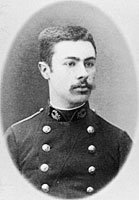| www.tmatlantic.com
Test & Soldering Equipment On-line Store |
|
D.E.V.I.C.E. (Wiki)Calculators Services |
|||||
Filter by first letter
|
Blondel, André
André-Eugène Blondel was a French engineer and physicist. He is the inventor of the electromechanical oscillograph and a system of photometric units of measurement. Blondel was born on August 28, in 1863 in Chaumont, Haute-Marne, France. He went attended the École nationale des ponts et chaussées (School of Bridges and Roadways) and graduated first in his class in 1888. Later he was employed as an engineer by the Lighthouses and Beacons Service until he retired in 1927 as its general first class inspector. He became a professor of electrotechnology at the School of Bridges and Highways and the School of Mines in Paris. Very early in his career he suffered immobility due to a paralysis of his legs, which confined him to his room for 27 years, but he never stopped working. In 1893 André Blondel sought to solve the problem of integral synchronization, using the theory proposed by Cornu. He determined the conditions under which the curve traced by a high-speed recording instrument would follow as closely as possible the actual variations of the physical phenomenon being studied. This led him to invent the bifilar and soft iron oscillographs. These instruments won the grand prize at the St. Louis Exposition in 1904. They were more powerful than the classical stroboscope, invented in 1891 then in use. In 1894 he proposed the lumen and other new measurement units for use in photometry. In 1909, assisted by M. Mähl, he worked on one of the first long distance schemes for the transmission of AC power. The project created a large 300,000 hp hydroelectric power plant at Genissiat on the Rhône, and transmitted electrical power to Paris more than 350 km away using polyphase AC current at 120 kV. In 1914 he performed a series of experiments in order to determine what was the most general law of electromagnetic induction. Citing wikipedia.org |
Site mapPrivacy policyTerms of Use & Store PoliciesHow to BuyShippingPayment




|

























